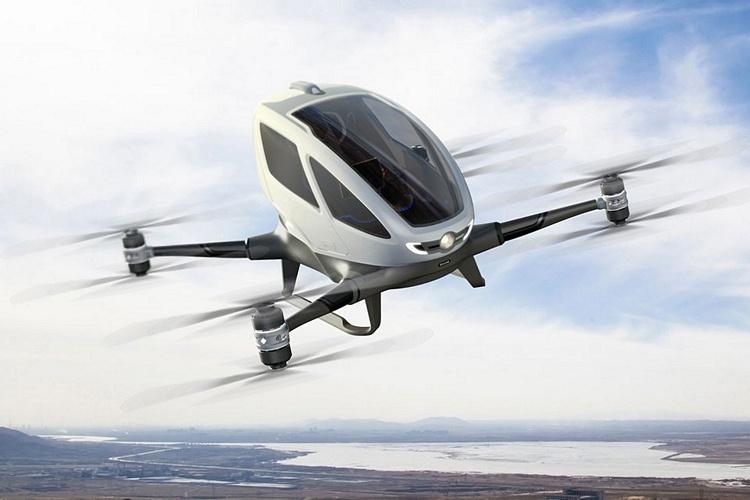In a global first, an autonomous passenger drone has received safety and airworthiness approval and will soon launch commercial operations: carrying passengers in the air via an unmanned quadcopter craft.
The craft is the EHang 216-S, which takes off vertically, can fly two passengers up to 30 kilometers or 19 miles at 130 kph, or 81 miles per hour, and produces no emissions thanks to its electric-only engine.
“We will launch commercial operations of the EH216-S unmanned eVTOLs, prioritizing safety above all,” Huazhi Hu, the founder, chairman and CEO of EHang said in a statement. “Our self-developed EH216-S passenger-carrying UAV system has finally met high expectation to secure the first TC in the global eVTOL industry, marking a significant chapter in civil aviation history.”
The “TC” Hu is referring to is a “type certificate” issued by the Civil Aviation Administration of China. EHang has obtained the certification after more than 1,000 days of working through approvals, the company said. EHang first applied in January of 2021, and Covid restrictions in China likely hampered some of the certification effort.
EHang received the certification today in an awarding ceremony in Beijing.
According to EHang, the certification process included 500 specific tests and more than 40,000 test flights. If accurate, that would mean EHang flew the EH216-S 40 times/day during the 1,000-day testing process, or more if the company took weekends off. That’s a huge number, likely spread over multiple test aircraft and including extremely short hops as well as longer flights.
Assuming all of this pans out and EHang actually does begin safe unmanned transport of people via drones, this is a big deal. EHang CEO Huazhi Hu called it “a significant chapter in civil aviation history.”
China has some of the worst traffic in the world, so being able to go from point to point in cities like Shanghai or Beijing would be a significant time-saver. Being able to land on top of skyscrapers or in larger parking lots could also make trips more efficient.
What cost that efficiency would come at is so far unclear.
Safety, of course, is a key challenge: both for passengers and for others in the city, whether on the ground or in the air. According to EHang, the EH216-S testing process has included extensive reliability and safety tests. The craft also possesses multiple redundant flight control systems and built-in failsafes, plus security software to fight hacking attempts.
That’s a massive part of regulatory approval of unmanned drones in any city, as no official wants to allow autonomous craft that can be hacked and used for malicious or even deadly purposes.
There’s also a centralized command-and-control center that will step in and remote control the drone if needed.
EHang has been working on this drone for many years. There’s no timeline yet, but it appears close to actually beginning operations soon. We’ve seen that with other autonomous drones like the Dronamics cargo drone, but not with autonomous drones that carry passengers.
There’s no clear timeline for capabilities like this to come to North America or Europe. While Uber has dabbled in helicopter trips in New York, those are traditional piloted vehicles. EHang has also tested its craft in Japan and Spain, where police have experimented with the capabilities it offers, so it’s possible the company will expand its scope of operations outside of China in the near future.
Read the full article here





